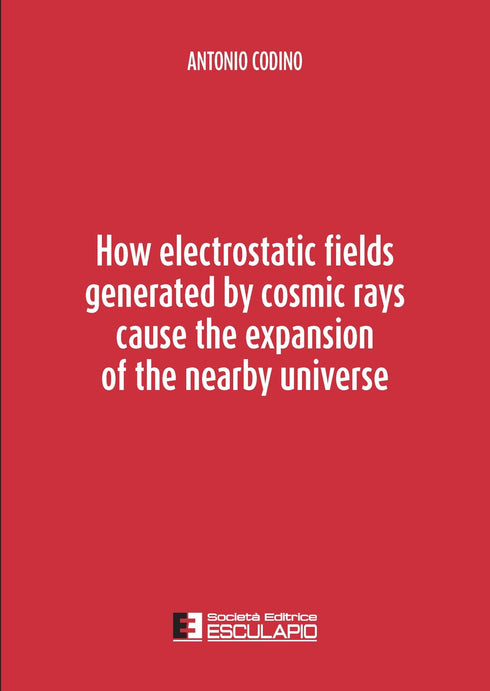CODINO - How electrostatic fields generated by cosmic rays cause the expansion of the nearby universe
SKU: 3944 -E22- I Ed.2022 17x24 Paperback Pag.240
AVAILABILITY: In stock (30 items)
PRODUCT TYPE: Paperback
VENDOR: Esculapio Ingegneria
Hurry! Only 30 Left in Stock!
Pickup available at Magazzino Esculapio
Usually ready in 1 hour
CODINO - How electrostatic fields generated by cosmic rays cause the expansion of the nearby universe
Default Title
Magazzino Esculapio
Via Umberto Terracini 30
40131 Bologna BO
Italy
+39516340113
The positive electric charge transported by the cosmic radiation while migrating from the interiors of galaxy clusters toward the outer intergalactic space, slowly but inevitably, uncovers a negative electric charge of the same amount inside galaxy clusters, where it is mostly retained. Electrons constitute the negative electric charge inside galaxy clusters. The negative charge and the positive one of the overflowed cosmic nuclei in the intergalactic space cannot be neutralized due to the separating, huge distances. After time intervals of a few billion years, electrostatic repulsion among galaxy clusters initiates to contrast gravity and, at longer time spans, dominates. The electrostatic repulsion among galaxy clusters, which always store negative electric charges, determines in a few billion years, a general receding motion of cosmic matter, including smaller celestial bodies dragged in by galaxy clusters. It will be proved that the general receding motion of cosmic matter occurs with increasing velocities of galaxy clusters as far as the corresponding distances from the Earth augment.
ANTONIO CODINO obtained his university degree in 1976 at the University of Rome investigating electron positron collisions at the Adone Storage Ring. For five years participated at CERN experiments, in Geneva, using the SPS Accelerator of 400 GeV where the lifetime of charmed mesons and electromagnetic radii of charged pions and kaons have been measured. Then, he worked for several years at the Saturne Accelerator in Paris, France, making Nuclear Physics experiments. Later he had a permanent position at the University of Perugia working in cosmic-ray experiments led by Robert Golden who had discovered antiprotons in the primary cosmic radiation. These experiments measured positron, electron and antiproton fluxes during many years, in several balloon flights in Canada and New Mexico. Concomitantly, he developed Gallium Arsenide and Silicon detectors for time-of-flight measurements for Nuclear Physics experiments, funded by INFN. An unsurpassed time resolution of one hundred picoseconds was achieved with Silicon detectors. In the last two decades he has been performing simulation of cosmic-ray trajectories in the Galaxy in collaboration with other physicists. The results are described in many publications, conference proceedings and books. Research activity was paralleled by teaching Electromagnetism and Classical Mechanics at university.







